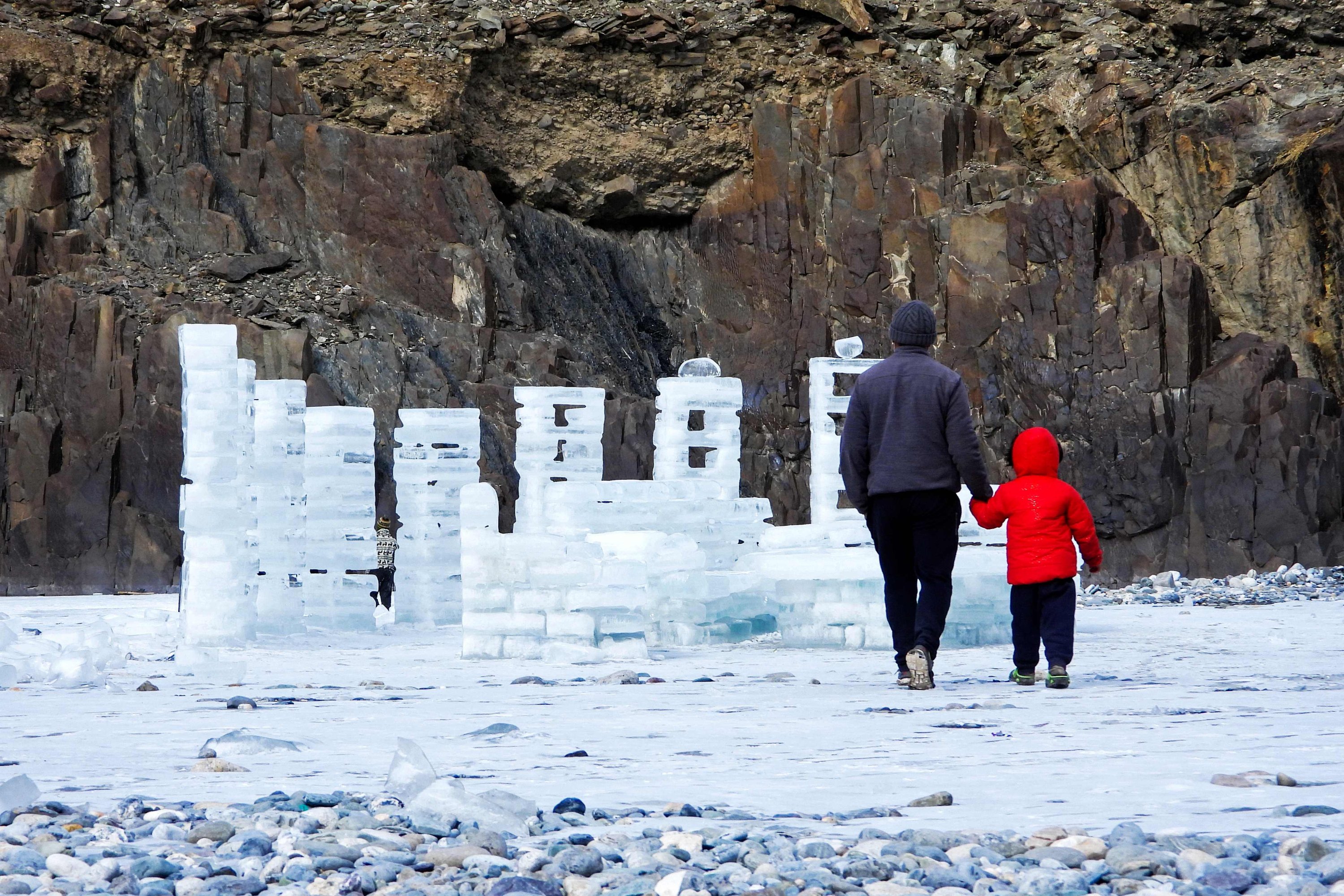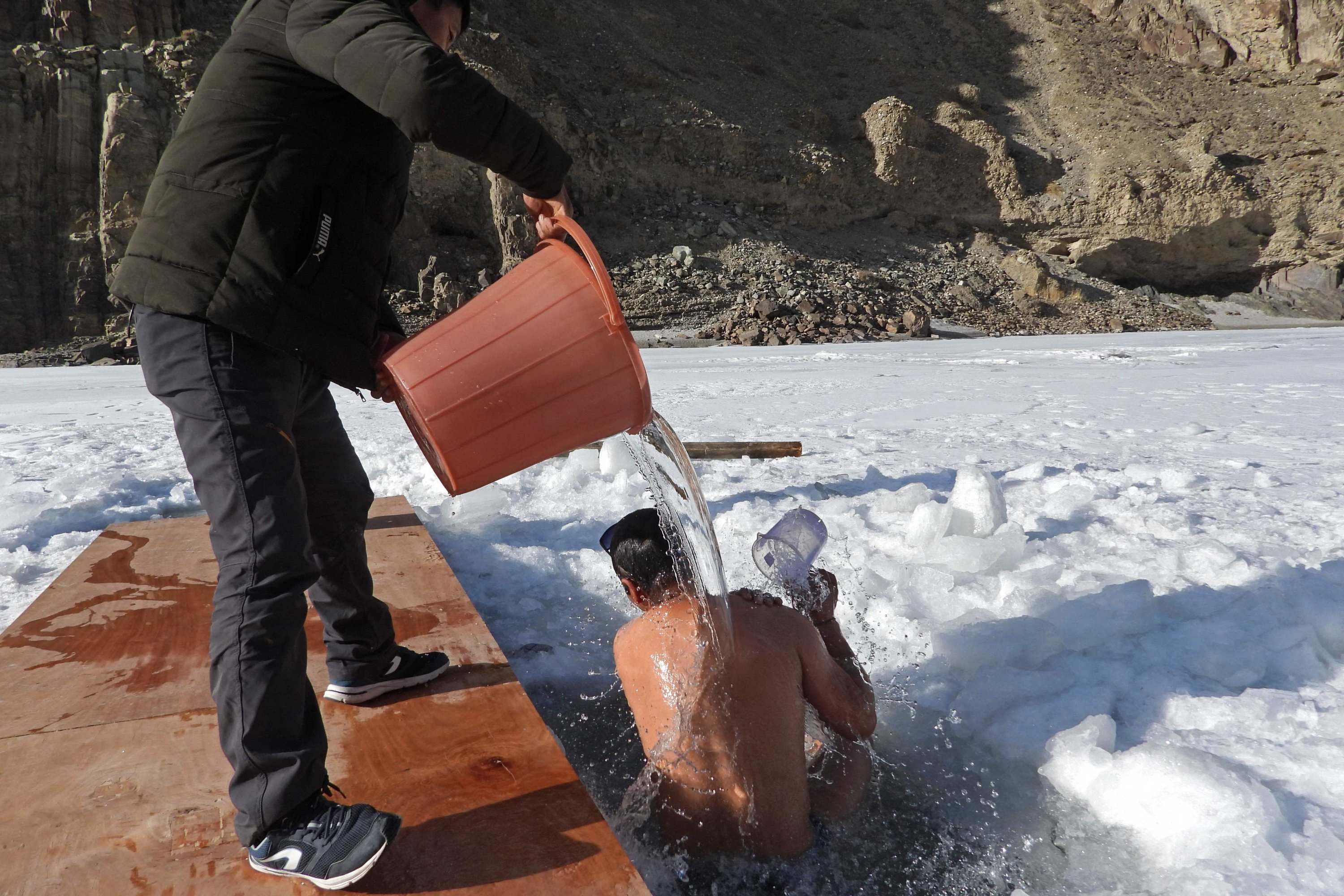© Turkuvaz Haberleşme ve Yayıncılık 2025
High in northern India's untouched Himalayas, artists are chainsawing blocks of ice from a frozen river, feverishly sculpting what they hope will be pioneering India's answer to China's Harbin International Ice Festival.
So far, the Kangsing collective have created what they call a "mini-colosseum," a cafeteria and a sauna near the coincidentally and aptly named village of Chilling in the northern region of Ladakh in the larger, more troubled Kashmir region bordering China's Tibet.
The installation at 3,350 meters (11,000 feet) serves as the take-off point for the popular seven-day Chadar Trek along the surface of the frozen Zanskar River through the breathtaking "frozen desert" scenery that has been shut for two years due to the pandemic.

"We're thinking we might have a festival big enough, grand enough like Harbin International Festival, something where we can ask artists from all over the world to come and participate," group member Tashi, who uses only one name, told Agence France-Presse (AFP).
For now, the mini-colosseum stands just a little higher than the average person.
But one day its creators hope to emulate the famous ice hotel in Jukkasjarvi, Sweden.
The spot was selected for its lack of sunshine that might melt the ice and where whistling icy winds keep temperatures at a bone-chilling minus 17-20 degrees Celsius (plus 1.5 to minus 4 degrees Fahrenheit) throughout the day.
With some support from the local government, the group, which includes a doctor, has also built a sauna at the bank of the frozen river, where they manage to raise the temperature up to 60 degrees Celsius.
A hardy group in their bathers then plunge straight into a pit outside, dug into the frozen Zanskar River, to take an ice bath lasting about a minute – if they can last that long.

"It's extraordinary and rejuvenating," said an invigorated Tundup Gyaltsan, a local police officer.
"You don't feel the cold at all," he assured.
